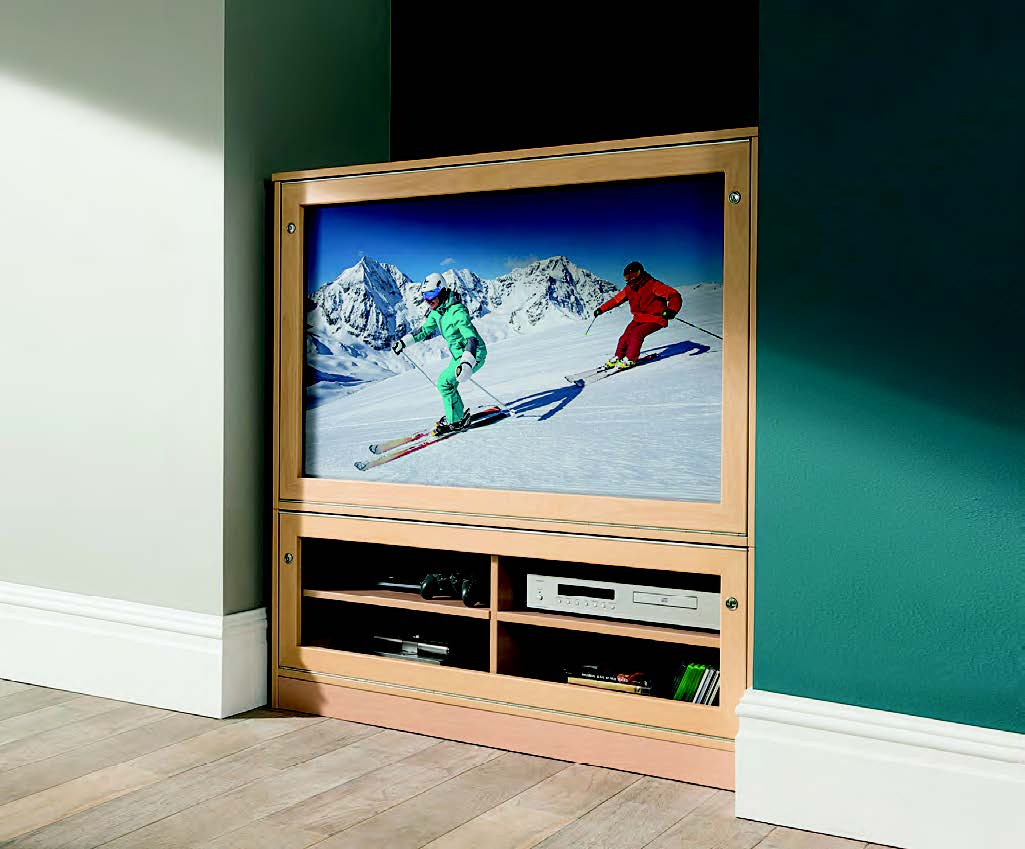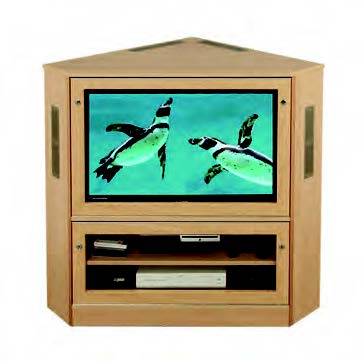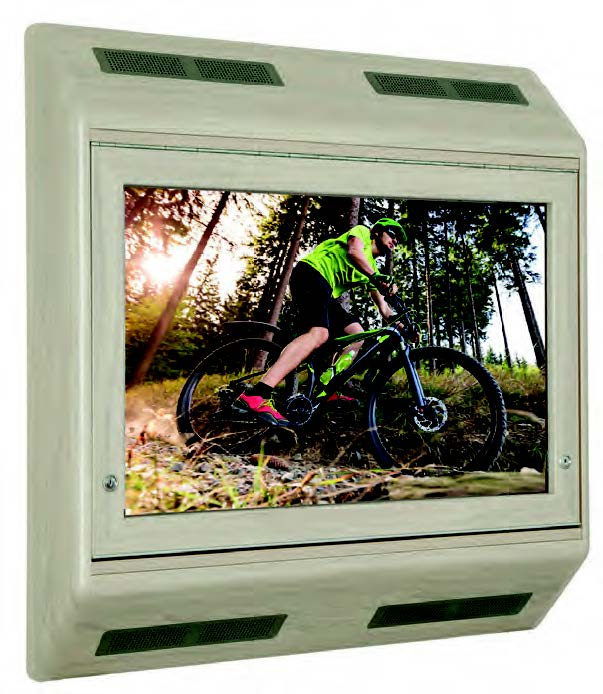
How modern anti-ligature TV cabinets are helping to make mental health environments more homely.
Health design guidance lays importance on the creation of a personal domestic environment and a relaxing atmosphere.
It states that “entertainment services, in the form of fixed or portable televisions and multi-media radio/music systems, may be provided in mental health service user bedrooms and other key areas to facilitate this.”
In fact, it is now widely accepted that bedrooms in mental health facilities should have a TV as standard, so that service users are comfortable and do not feel like they are being punished.
Dan Vesty of Tough Furniture explains, “TVs in mental health bedrooms can play an important role in keeping service users connected with the outside world, as well as going some way towards fulfilling their needs for connection with other people.”
Litgature risks
Graham Gallagher, director of ProEnc, which supplies entertainment solutions to mental health trusts around the world, said: “There are several things to think about when TVs are installed into mental health units.
"Usually the screens are wall mounted on wall brackets, which could pose a ligature risk; they have cables for power and an aerial, which are both accessible on standard screens; and the screens themselves can be smashed and used as a weapon or to self harm.”


Thinking ahead – solutions that last
ProEnc’s solution fully encloses the TV and cables, preventing anyone other than authorised staff from accessing the TV via two high-security locks. (Not cam or compression locks, as these are easily forced open).
In addition, the viewing window is the thickest in the industry, with the enclosure preventing damage to the TV should anything be thrown at it; and the case and door are made from steel.
ProEnc also designed its enclosure to come as standard with thermostatic cooling and a TV bracket.
“The audio from the TV is a crucial element, too, and the ability to hear the TV while the door is locked is essential to ensure service users get the best-possible experience while receiving treatment for their illness." Hence their enclosure has an audio vented door.
“Estates and facilities managers should consider a solution that will futureproof the initial purchase, so when the facility replaces the TV in a number of years, the same enclosure will accommodate a larger-screen TV. The strongest material should be used,” said Gallagher.
Tough Furniture - an early pioneer of TV solutions
Vesty said: “We pioneered the development of cabinets specifically to protect televisions, computers and other vulnerable items from challenging behaviours in psychiatric settings. We use lockable screens of polycarbonate, an immensely-strong plastic material.
“As with so many of our innovations, it was the customers who then took the idea further, requesting units for protected display of notices or artwork to brighten up the living/working space, and even for the protection of fishtanks.”
Safety first
As TVs evolved to flatscreens, so the protection cabinet design followed.
Vesty said: “On both our wall-mounted and floor units, we also use a heavy-duty inset strip hinge for the unit door, which significantly reduces the likelihood of it being damaged or wrenched off.
“In our wall-mounted units, the design removes any visible screws or boltheads, which increases both the security of the cabinet and the aesthetic appeal.”
“Our cabinets have a genuine polycarbonate viewing panel rather than an alternative material such as Perspex. Only polycarbonate is strong enough for mental health environments.”
A domestic feel
Aesthetics play a major role in ongoing design work.
“We are always striving to create a homely, therapeutic effect from the furniture we produce, avoiding excessive ‘institutionalism’. Our TV cabinets are no exception, as they are produced in attractive woodgrains that help to create the right ‘domestic’ feel,” said Vesty.
“We’ve also recently invested in vinyl wrapping technology that will allow us to significantly increase the range of colours and woodgrains we are able to offer, and these will be on the market soon.”
Offering advice to specifiers
As well as strength and durability, Vesty points out, “It’s also important to make sure you get the right-sized cabinet, particularly if you are looking for one that will also store other media devices, as cabinets that are too tightly packed with equipment can cause problems when it comes to air circulation and heat dissipation.”
Future trends
Gallagher predicts that recessed solutions will become increasingly popular.
Vesty points to the trend towards thinner and thinner TVs, which, in turn, should increase the demand for slimmer-profile, less-obtrusive cabinets.
Both Gallagher and Vesty are being increasingly asked for cabinets that will store and protect other items such as games consoles, DVD players, and Sky boxes as well as the TV screen itself.”